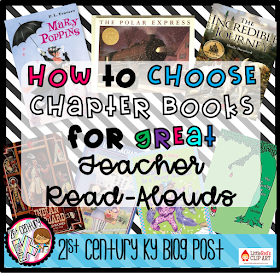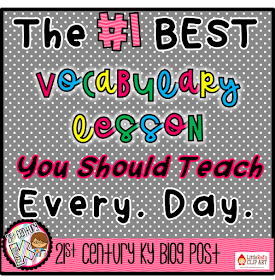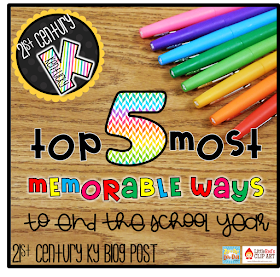How to Choose Chapter Books for Great Teacher Read Alouds
Reading chapter books aloud to my class is one of my most favorite literacy instructional moves. There is not much better than diving into a great story together and experiencing every word from beginning to end. You know it's a great read aloud when your students are hanging on every word and you even catch yourself wanting to read on after time for reading is over. BUT, choosing the right text is crucial! How do you choose which books to read aloud to your class? |
| How to Choose Chapter Books for Great Teacher Read Alouds |
As a general rule, books read aloud (whether chapter books or picture books) should be at least one to two grade levels higher than your students' independent reading levels. This provides the opportunity to model what good reading sounds like at higher levels, think-aloud for reading strategies (check out my #1 Best Vocabulary Lesson HERE), and improve students' listening comprehension. In today's world of podcasts, digital books, and multi-tasking in general - teaching children how to listen to a story is almost as important as teaching them how to read it!
I use the following guidelines when choosing read-aloud texts:
1. Choose a book at least 1-2 grade levels higher than your students' independent reading levels. This year my second graders have heard 9 chapter books read aloud. The average level was around 5th grade. Not only were my children able to pass the difficult AR test afterwards, but they accrued many points in doing so!
2. Choose books that are easy to bring to life. Some texts just lend themselves to being great read-alouds. In my Kindergarten-teaching days I would put my readings of Junie B. Jones's antics up against the greatest storytellers' renditions. The way Barbara Park created the character and wrote the dialog make her books an easy choice for increasing engagement. Louis Sachar's Sideways Stories from Wayside School is another fun, engaging text!
3. Choose books that are relevant to other subject areas. During the fall months we read The Indian in the Cupboard by Lynne Reid Banks and were able to make connections to our Thanksgiving unit on Native Americans as we read. Connecting fiction and informational texts is a great way to increase content understanding and improve comprehension skills.
4. Choose books that are culturally diverse. Books can be powerful teaching tools and can become the vehicle for learning about so much more than reading skills. Choosing books that represent a variety of cultures is vital. All students in the class need to "see" themselves in the books you read aloud in order to be able to relate and make text-self connections. Moreover, hearing and discussing books about culture different than one's own is a way to break down barriers, expose biases, and begin to foster a mindset of acknowledgement and acceptance among cultures. As teachers it is our responsibility to make sure the books we choose to read aloud are diverse.
5. Choose books that interest your students. After hearing a true story about two dogs saving a man who had fallen through an icy pond during a core reading lesson I could tell my students' interest were piqued. They love animals so I knew they would love The Incredible Journey by Sheila Burnford. The text was on a 7th grade reading level and the action was all implied as the animals' journey was documented by a narrator, but my class was enthralled. We laughed at times, we sucked in our breath at times, and we cried at the end. It's probably my favorite memory from this entire school year!
6. Choose books that interest you! I remember vividly how my first grade teacher told us that her favorite authors were Shel Silverstein and Chris Van Alsburg as she read ALL of their stories aloud to the class. It's no coincidence that these authors' books still rank among MY favorites today. Your students want to hear about what you enjoyed reading as a child and they want to be like you. I know I was the most excited person in the room the day we started reading Mary Poppins by P.L. Travers because the series was one of my very favorites as a child. My excitement fueled my students' excitement as well and we loved exploring the adventures of Jane and Michael together!
Remember - reading a chapter book aloud is a commitment. It takes time to work through an entire book when you may only be able to allot 15-20 minutes a day to the task. Stay the course and see those chapter books through! Your students WILL remember the experience as they grow older... and for some of them it will be their favorite time spent with you!





